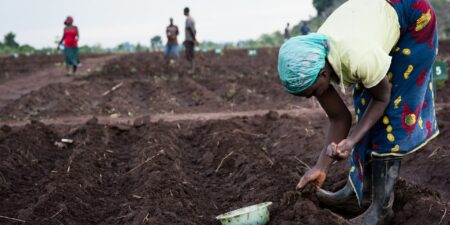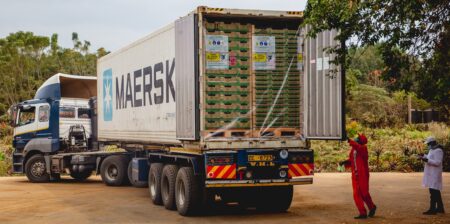- According to the Agriculture and Food Authority (AFA) there are 15 sugar factories in the country.
- Despite these investments, self-sufficiency in sugar has remained elusive over the years as consumption continues to outstrip supply.
- The deficit is met through imports mainly from COMESA states.
President William Ruto of Kenya has declared war on sugar cartels, who have been blamed for causing a collapse of state-owned factories, as private players flourish in the country.
This, even as imports continue to dominate the market, which has over years struggled with a shortage of the sweetener, owing to a low production capacity by local millers.
Kenya’s sugar industry cartels
After taking power in September 2022, President Ruto promised to revive the sugar industry. Among others, he offered to investing in new and modern milling machines besides providing affordable fertilizer to farmers.
And just last week, he promised to breathe life into Mumias Sugar, one of Kenya’s state-owned millers, by October. But all the focus is on Dr Ruto’s war on “cartels”, whom he accuses of being behind the collapse of the industry.
“We have told those people to move out,” he said, making reference to billionaire Jaswant Singh Rai, a tycoon who controls 40 per cent of Kenya’s sugar industry. Through court cases, sugar billionaire Jaswant Singh Rai is accussed of frustrating efforts by the government to revive ailing Mumias Sugar company.
Jaswant Singh Rai has since withdrawn court cases in Kenyan courts that had forestalled Mumias’ comeback.
Amnesty International, Haki Afrika and the Law Society of Kenya (LSK) have, however, raised concerns over Dr Ruto’s pubic remarks on how he intends to deal with “sugar cartels” and corrupt individuals.
According to Ruto, they have three options; “leave the country, go to jail or go to heaven.” He said they are sabotaging the government’s plan to revive and reform the ailing sugar industry. However, his remarks have left a bitter taste in the mouth of human rights groups and the opposition, who view them as death threats.
Mumias Sugar Ownership
A tough-talking Ruto demanded that private investors engaged in a bitter dispute over the ownership of Kenya’s largest miller Mumias Sugar Company must leave the firm alone.
The two investors involved in the management dispute were billionaires Jaswant Rai, chairperson of the West Kenya Sugar Company, and his brother Sarbjit Singh Rai, who have all withdrawn their court cases.
Further, President Ruto has promised to write-off all state-owned sugar factories’ debts amounting to over $804 million and ensuring they are not privatised.
According to statistics from the Agriculture Ministry, the sugar industry supports the livelihoods of at least 17 per cent of the Kenyan population, based in 15 counties of Nyanza, Rift Valley, Western and Coast regions.
Read Also: Job creation, growth of industries key pillars in Kenya’s $26.4Bn budget
According to the Agriculture and Food Authority (AFA) there are 15 sugar factories in the country. Despite these investments, self-sufficiency in sugar has remained elusive over the years as consumption continues to outstrip supply. The deficit is met through importation mainly from the COMESA states.
Official statistics indicates that national demand stands at 1.01 million metric tonnes against local production of 490,704 metric tonnes, leaving an annual deficit of 521,695 metric tonnes. Kenya has a milling capacity of 14.96 million metric tonnes or 41,000 tonnes of cane per day.
Current production stands at 4.75 million metric tonnes, which is 48 per cent of the milling capacity, yet the country needs to process 9.8 million metric tonnes of cane that can produce 1.09 metric tonnes of the sweetener.
History of Kenya’s sugar industry
Sugarcane cultivation in Kenya began in the early 19th century by Indian settlers in Kibos, a neighborhood off Kisumu, the third largest city in Kenya. The sugarcane was initially milled by jaggery plants.
The establishment of two factories, Miwani in Kisumu in 1922 and Ramisi in Kwale County 1927, marked the beginning of large scale commercial sugarcane production in the country for extraction of sucrose as the major product. The by-product includes molasses, bagasse and filter cake.
After independence, the government explicitly expanded its vision of the role and importance of the sugar industry.
It sought to accelerate socio-economic development, redress regional economic imbalances, promote indigenous entrepreneurship and promote foreign investment through joint ventures.
“Recognizing the importance of the sector, the Government and the private sector have been involved in the promotion of the industry through direct investments mainly on factories for processing cane and other related infrastructure,” AFA said.
Read Also: The bitter truth about Kenyan sugar
Establishment of factories
State-owned Muhoroni Company was established in 1966, Chemelil (1968), Mumias (1973), Nzoia (1978) and South Nyanza (Sony Sugar) in (1979).
Privately owned West Kenya Sugar Company came in 1981. Soin Sugar Company (2006), Kibos Sugar(2008), Butali Sugar Mills (2011) and Transmara in 2011. Sukari Industries Ltd was established in 2012, Kwale International Sugar Company (2014), West Kenya Sugar Company-Olepito Unit (2017) and Busia Sugar Industry (2018).
There are several built-up jaggery mills and numerous mobile jaggery units. The establishment of the factories aimed at achieving self-sufficiency in sugar with a surplus for export in a globally competitive market. It was also aimed at generating gainful employment and creating wealth while supplying raw material for sugar related industries.
They were also envisioned to promote economic development in the rural economy and beyond, through activities linked to the sugar industry. Following the investment in capacity expansion, Kenya attained self-sufficiency in sugar production in 1980 and 1981. The country was producing 401,239 metric tonnes, against a demand of 299,514 metric tonnes in 1980. The following year, Kenya produced 368,970 metric tonnes against a demand of 324,054 metric tonnes.
The successful implementation of the expansion program in the earlier years was attributed to the regulatory and manpower development systems put in place by the government.
Read Also: Dangote comes clean on alleged plot to monopolize sugar industry
Closure and collapse
The country’s sugar industry, which remained stable until the late 1990s has, however, slipped into economic downturns in recent years. Some of the factors blamed on the collapse include poor management with cartels running the show.
From encouraging cheaper imports to a black market due to porous borders mainly through Somalia, the industry has suffered at the hands of cartels or sugar barons for the past two decades.
A 2020 report by Kenya Association of Manufacturers shows that sugar is smuggled into Kenya through porous borders. This menace leads to quality compromises, revenue losses and a distorted market.
The report further blamed governments for inadequate regulations that undermine production and leave farmers at risk of exploitation. High cost of production, debt, acute cane shortage and declining yields were other challenges highlighted in the report.
The worst case is the recent closures of state-owned factories in western Kenya at the height of sugar-cane poaching by private millers. Earlier this year, AFA asked millers in Western Kenya to shut down over cane shortage, a move that led to heightened poaching and crushing of pre-mature cane.
Firms from the region which have since halted operations include West Kenya Sugar Company (Kabras) and Butali Sugar Mills with other privately-owned and ailing state sugar millers already out of production.
Mumias Sugar Company had halted operations two months earlier, amid an impending sugar shortage in the country. “Supplies started to be affected when major suppliers such as Kabras and Butali closed,” Retail Trade Association of Kenya (Retrak) CEO Wambui Mbarire said.
Sugar shortage
Willy Kimani, the CEO of retail chain Naivas Supermarkets, said: “The is a supply constrain and prices are going up.”
His sentiments were echoed by the Consumer Federation of Kenya (COFEK) which has since warned of a biting shortage if imports fail to arrive on time. “All sugar millers were shut down. Imports were opened up with unclear import quotas and delivery timeframes,”Cofek Secretary-General Stephen Mutoro said.
According to Mr Mutoro, the deficit will certainly be amplified as there were cases of hoarding of the commodity, so as to keep prices high and for longer periods. This, as the country failed to secure enough imports from COMESA and other markets.
President William Ruto last month said private businessmen will import in at least 100,200 metric tonnes of sugar in a four-month importation window to bridge the deficit.
This was after Kenya failed to secure enough volumes from the COMESA market in the wake of the closure of local millers on shortage of canes. “We have been reluctant to import sugar to avoid working against our farmers, but now, we have ordered imports from outside the COMESA market,” Ruto had said.
Availability of the product in the international market has, however, remained a challenge. This is due to low production with countries holding on to their stocks to meet local demand.
According to Mello Commodity, a Brazilian agricultural commodities marketing and sales agency, the sugar industry faces a challenging scenario in the second half of 2023, with the imminent risk of a worldwide sugar shortage.










